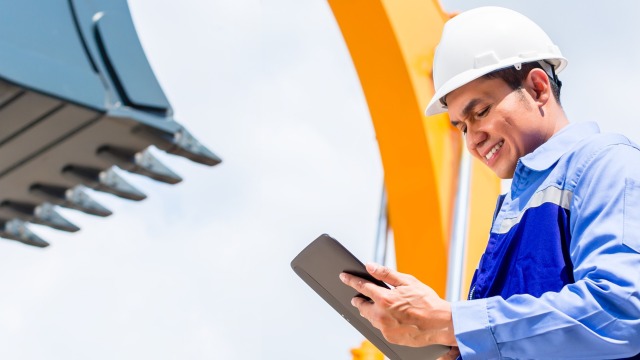



Data from construction and agricultural machinery must be transferred securely, reliably and cost-effectively. What off-highway players need to bear in mind.
Vehicle data are valuable but sensitive too. Information about machines, locations and personnel must be protected just like the telematics software and the manufacturer’s know-how. If the data streams for analysis and further processing are unbuffered and are suddenly interrupted, services, business models and even a company’s reputation are at risk. Off-highway players should bear in mind these five points to ensure that their telematics data reach the cloud securely and efficiently:
Whether in forests, fields, municipal areas, warehouses or on construction sites – mobile working machines are often used in areas with poor network coverage and limited bandwidths. If the fleet is spread around the world, high mobile communications and roaming costs can also be incurred. A telematics solution should therefore not only feature an offline mode to compensate for network dead spots or poor network performance (buffering) but also limit data streams in an appropriate manner. Processor-based TCUs can minimize the volume to be transmitted through software-based pre-filtering, edge analyses and data compression. International e-SIMs, which, if possible, should cover all the necessary countries, help to avoid unpredictable roaming charges.
Cloud storage solutions which are suitable for off-highway applications cannot be compared with simple solutions geared more towards the consumer sector. They have to be highly available and provide managed databases with appropriate SLAs and export functions. Space-saving formats for efficient, low-cost data transmission from the machine are important, as is a rights management system with access authorization, user management and import functions for external sources such as weather data.
A secure data storage system should allow vehicle data to be integrated seamlessly into the frontend via a standard HTTPS API with a secure endpoint. Other interfaces should be available for connecting ERP systems and industry-specific services such as Agrirouter, BIM or geoCapture (ISO 15143-3) securely.
Anyone who would like to avoid costly surprises when it comes to collecting, storing and analyzing vehicle data should make sure that the storage solution not only satisfies two key criteria – interoperability and the availability of analysis tools – but also meets data protection requirements and makes no compromises as regards security. An architecture with at least three replicas and key basic elements such as a firewall, gateway and load balancer are therefore recommended. This is the only way to ensure reliable, real-time protection for vehicle and usage data against loss and unauthorized access.
There are numerous pitfalls on the way to secure data transmission and avoiding economic risks. However, these can be avoided through skillful actions. Future telematics users would be well advised to check in detail how well they can achieve this with their particular solution and how future-proof it is. Starter kits geared to the needs of the sector allow OEMs and IoT service providers to achieve first use cases with a small budget, to check future viability in detail and to scale the solution on a step-by-step basis with a high degree of security and reliable data transmission.
Better safe than sorry? Test our BODAS Connect Starter Kits: